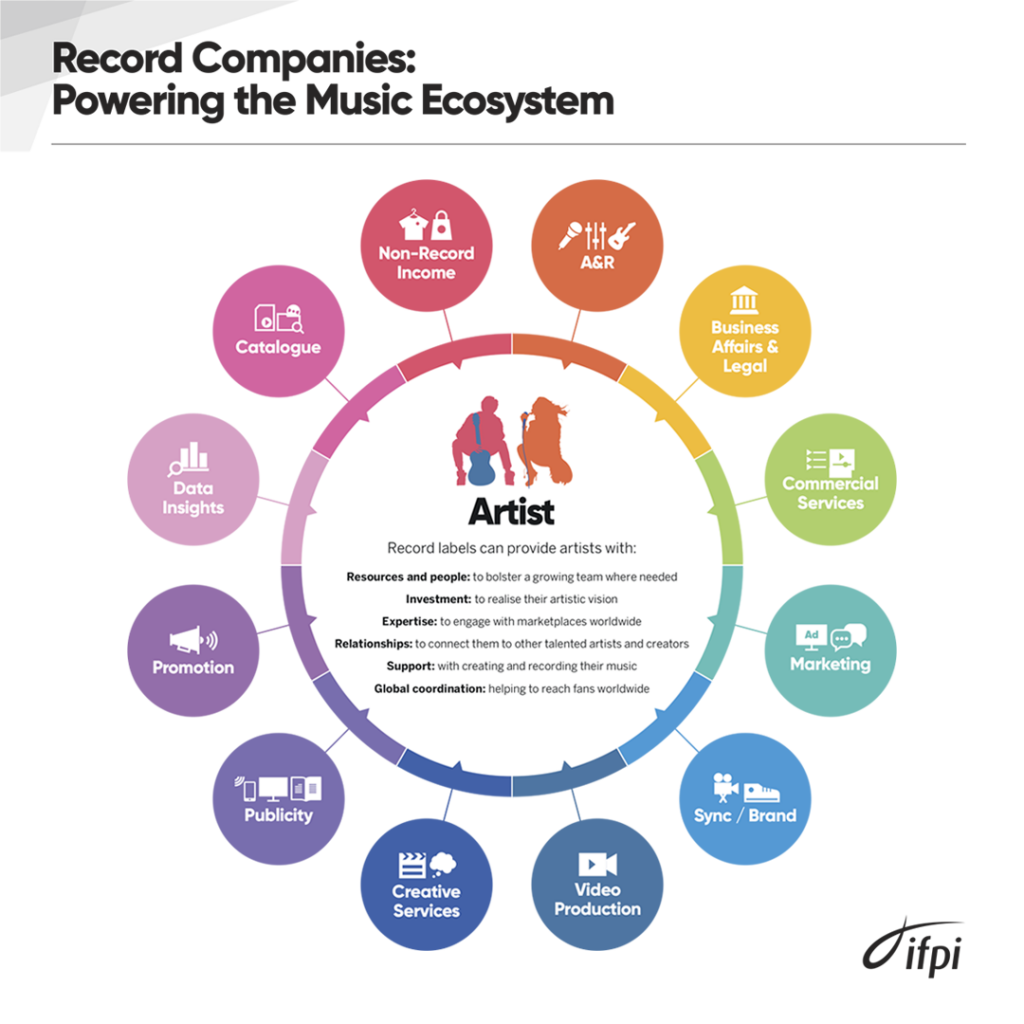The International Federation of the Phonographic Industry (IFPI), representing the recording industry worldwide, released a new report today, Investing in Music: The Value of Labels. The report highlights the important role that labels play in the global music industry. They are the primary investors in music; record labels discover and nurture artists, produce and promote music, and connect artists with their fans.
 According to the report, labels remain the largest investor in music, maintaining tens of thousands of artists on global rosters, and investing 27 percent of their revenues—US$4.5 billion—in artists around the globe. “That’s an incredible figure that reflects their commitment to artists and the future of music,” says the report. “No other segment of the music sector invests in artists on anything like this scale.”
According to the report, labels remain the largest investor in music, maintaining tens of thousands of artists on global rosters, and investing 27 percent of their revenues—US$4.5 billion—in artists around the globe. “That’s an incredible figure that reflects their commitment to artists and the future of music,” says the report. “No other segment of the music sector invests in artists on anything like this scale.”
Jointly introducing the report, Frances Moore, Chief Executive of IFPI and Alison Wenham, CEO of WIN, said: “Investing in Music highlights not just record companies’ financial investment in artists, but also the enduring value they bring to artists’ careers. In the digital world, the nature of their work has evolved, but their core mission remains the same: discovering and breaking new artists, building their careers and bringing the best new music to fans. These are the defining qualities of record companies’ investment in music.”
Here are the key highlights of the Investing in Music report:
Music does not just happen … it requires hard work and substantial investment. Record companies are responsibly for discovering and nurturing artists, producing and promoting their music and other forms of creative output, and connecting artists with fans in new and innovative ways. According to the report, it costs somewhere between US$500,000 and US$2 million to break a new act in a major market.
Record labels are the primary investors in music. Music companies invest US$4.5 billion annually in discovering, nurturing, and promoting artists. No other segment of the music sector invests in artists on anything like this scale, and this investment has been sustained even as the music industry weathered two decades of revenue decline.
Breaking down labels’ US$4.5 billion annual investment. This significant investment is broken down into two primary areas: A&R (or artists & repertoire), which is the discovery and development of artists, and marketing campaigns which promote artists and their music.
Developing the digital market. Record companies have invested heavily in the fast-developing infrastructure of the digital market. There is a complex system of digital licensing services which requires a substantial investment from music companies to track and distribute recordings.
Unlocking new revenue streams. Record companies invest in new revenue streams, such as licensing tracks for movies and TV, giving artists that have broken through to an audience new sources of income. A record company may have as many as 200 long-term brand partnerships active on behalf of their artists at any point in time.
The full report is easily accessed on this interactive website.
 IFPI has launched a new website titled Powering the Music Ecosystem designed to showcase the role record labels play in today’s global music landscape as a leading investor in music, and partner and collaborator with artists.
IFPI has launched a new website titled Powering the Music Ecosystem designed to showcase the role record labels play in today’s global music landscape as a leading investor in music, and partner and collaborator with artists.
 According to the report, labels remain the largest investor in music, maintaining tens of thousands of artists on global rosters, and investing 27 percent of their revenues—US$4.5 billion—in artists around the globe. “That’s an incredible figure that reflects their commitment to artists and the future of music,” says the report. “No other segment of the music sector invests in artists on anything like this scale.”
According to the report, labels remain the largest investor in music, maintaining tens of thousands of artists on global rosters, and investing 27 percent of their revenues—US$4.5 billion—in artists around the globe. “That’s an incredible figure that reflects their commitment to artists and the future of music,” says the report. “No other segment of the music sector invests in artists on anything like this scale.”
Music Canada